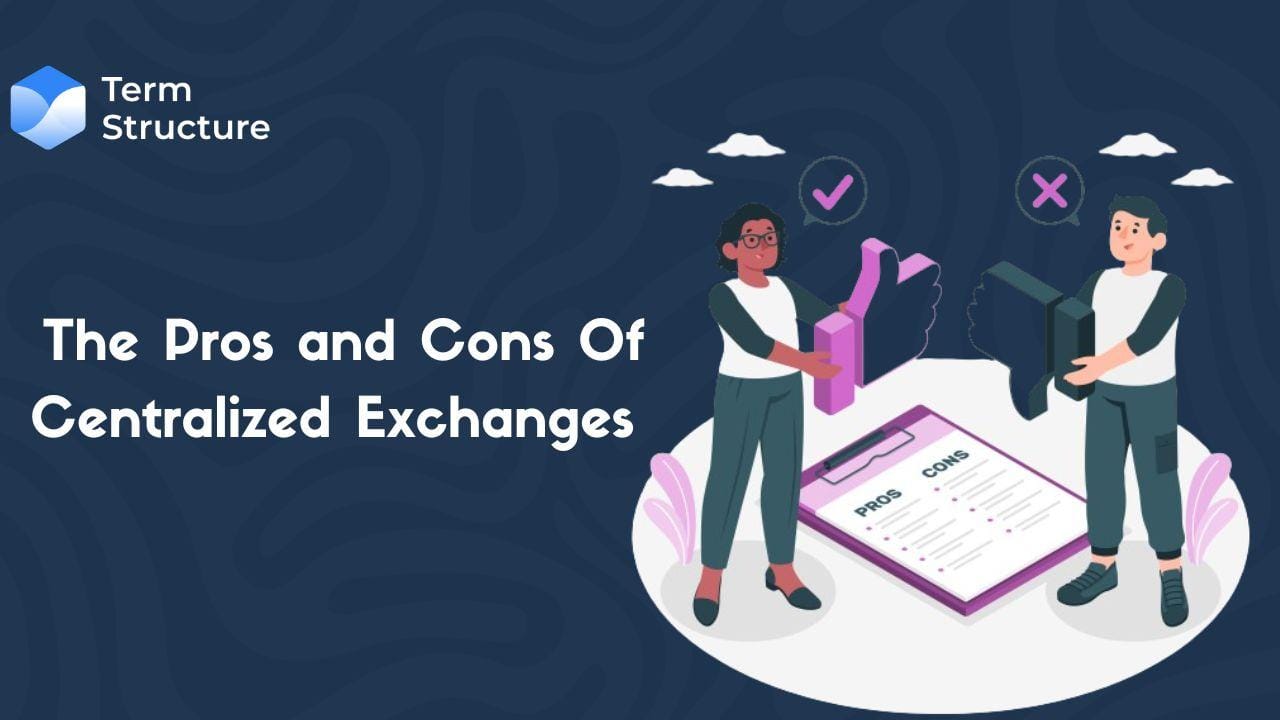The Pros And Cons Of Centralized Exchanges

Centralized exchanges (CEX) have long been central to the cryptocurrency trading scene, offering liquidity, ease of use, and a suite of features. However, they come with their fair share of pros and cons. Let’s examine both sides of the coin when it comes to centralized exchanges.
The Pros
1. High Liquidity and Volume: Centralized exchanges often boast significant liquidity, facilitating swift trade executions at market prices. This liquidity minimizes slippage and enhances trading efficiency.
2. User-Friendly Interfaces: Many centralized exchanges prioritize user experience, providing intuitive interfaces that cater to both beginners and seasoned traders. These platforms typically offer features such as order books, price charts, and trading tools, making trading accessible to all.
3. Regulatory Compliance: Centralized exchanges tend to adhere to regulatory frameworks, providing users with a sense of security and legal protection. Measures like Know Your Customer (KYC) and Anti-Money Laundering (AML) procedures are commonly implemented to prevent illicit activities.
4. Customer Support: Established centralized exchanges offer customer support services to assist users with account-related issues, technical problems, or inquiries. Responsive customer support can significantly improve the overall user experience, especially during periods of market volatility.
5. Fiat Integration: Made money in crypto? How do you spend it? No matter how long you leave your crypto on the Blockchain, you will have to liquidate it at some point to meet your needs. This is where centralized exchanges brag about their relevance.
Many centralized exchanges support fiat currency deposits and withdrawals, simplifying the transition between traditional currencies and cryptocurrencies. This integration facilitates onboarding for new users and broadens access to the crypto market.
The Cons
1. Centralization Risks: Centralized exchanges control users' funds and data, exposing them to risks such as hacking, insider attacks, or mismanagement. A security breach or operational failure can result in financial losses for users. A case in point is the now defunct FTX, where it was alleged that insider trading, indiscriminate use of users funds, and price manipulation went on unnoticed.
2. Censorship and Control: We see this happen every day with centralized exchanges link Binance, Coinbase, Bitfinex, etc
Centralized exchanges have the authority to impose restrictions on trading activities, including delisting assets, freezing accounts, or implementing trading halts. These may be done to comply with regulations or manage risks, these measures can limit users' autonomy and disrupt trading operations.
3. Single Point of Failure: Centralized exchanges are vulnerable to single points of failure due to the centralization of resources and infrastructure. Technical issues, server outages, or regulatory interventions can halt trading activities, causing inconvenience and potential financial losses for users. This happened in 2021, when an AWS outage caused a 7-hour disruption on centralized exchanges, causing chaos and raising questions about decentralization.
4. Privacy Concerns: Centralized exchanges collect and store users' personal information as part of their compliance obligations, raising concerns about user privacy and data security. Instances of data breaches and privacy violations highlight the risks associated with centralized data repositories. Earlier this year an Iranian exchange accidentally exposed the personal data of nearly 230,000 users.
5. Counterparty Risk: When trading on a centralized exchange, users entrust their funds to the platform, assuming counterparty risk. In the event of insolvency, hack or malpractice by the exchange, users may struggle to recover their assets. FTX, Cryptopia, Mt. Gox, etc. are famous examples.
6. Limited Asset Selection: Centralized exchanges often have a limited selection of cryptocurrencies and tokens available for trading compared to decentralized exchanges (DEXs). This can restrict users' ability to access niche or emerging digital assets.
7. High Fees: Centralized exchanges typically charge higher trading fees compared to DEXs. These fees can include trading fees, withdrawal fees, deposit fees, and other charges, which can eat into users' profits, especially for frequent traders. However, one can argue that Decentralized exchanges cost an equal amount if not more in gas fees, transaction fees, failed transactions due to network halt, or other similar mishaps in both L1 and L2 Blockchains. For example, gas fees in Ethereum have been in the $50-250 range per transaction, in the last few days!
8. Dependency on Third Parties: Users of centralized exchanges are reliant on the exchange's infrastructure and third-party service providers, such as banking partners and liquidity providers. Any disruptions or failures in these services can impact users' ability to trade or access their funds.
9. Geographical Restrictions: Some centralized exchanges impose geographical restrictions on users from certain countries or regions due to regulatory or compliance reasons. This can limit access to trading opportunities for users in restricted jurisdictions.
9. Potential for Insider Trading: Centralized exchanges may have access to sensitive information about user trading activity, which could be exploited for insider trading or front-running purposes, undermining the integrity of the platform.
10. Lack of Transparency: Despite providing a user-friendly interface, centralized exchanges often lack transparency regarding their operations, fee structures, security practices, and order book data. This opacity can make it challenging for users to assess the risks associated with trading on the platform.
11. Resistance to Innovation: Centralized exchanges may be slower to adopt new technologies or innovations in the cryptocurrency space due to regulatory concerns, risk aversion, or organizational inertia. This can result in missed opportunities for users to access cutting-edge features or trading mechanisms.
Conclusion
In summary, while centralized exchanges offer certain conveniences and advantages, they also pose significant risks and limitations for cryptocurrency traders and investors. As the cryptocurrency ecosystem evolves, users may increasingly seek alternatives such as decentralized exchanges or hybrid platforms that combine the benefits of centralized and decentralized models.
Some tips from the Term Structure team:
- Try to split your funds across CEXs and DEXs, on multiple exchanges and multiple wallets to limit your risk to a catastrophic event like FTX or a Wallet being hacked
- Be disciplined and cautious about your login details including passwords, 2FAs, seed phrases, etc. The more security steps you add to accessing or withdrawing your funds, the better
- Don’t click on links that can be malicious: emails, Twitter posts, private messages, etc.

